Achelousaurus
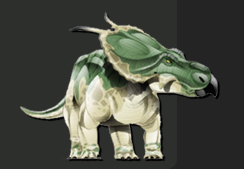 The Achelousaurus is a quadrupedel herbivore which means that it walked on all four legs as opposed to two legs.
The Achelousaurus is a quadrupedel herbivore which means that it walked on all four legs as opposed to two legs.
Adasaurus
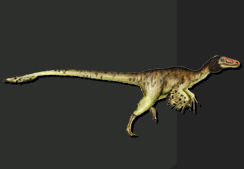 The Adasaurus is closely related to the Dromaeosaurus. It was equipped with the same razor sharp claw on each of its hind feet.
The Adasaurus is closely related to the Dromaeosaurus. It was equipped with the same razor sharp claw on each of its hind feet.
Afrovenator
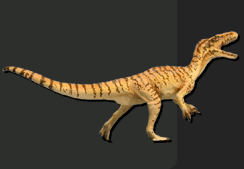 The Afrovenator name means African Hunter.
The Afrovenator name means African Hunter.
Agujaceratops
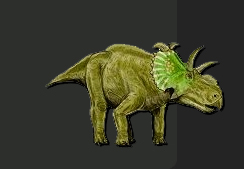 When the Agujaceratops was first discovered paleotologists thought that it was a Chasmosaurus until years later, when they realizes its a totally new species
When the Agujaceratops was first discovered paleotologists thought that it was a Chasmosaurus until years later, when they realizes its a totally new species
Alamosaurus
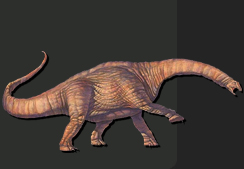
The Alamosaurus was first discovered in 1922 Charles Gilmore. He found a pelvic bone and a shoulder bone.
Altirhinus
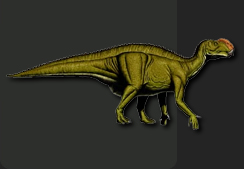 Altirhinus got its name in 1998 from the latin word altus (high) and the Greek word rhinos (nose).
Altirhinus got its name in 1998 from the latin word altus (high) and the Greek word rhinos (nose).
Animantarx
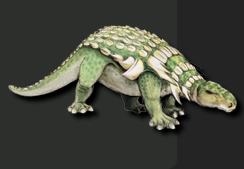 Fossil finding of the Animantarx suggest that the dinosaur was this was know to be in a floodplain environment.
Fossil finding of the Animantarx suggest that the dinosaur was this was know to be in a floodplain environment.
Ankylosaurus
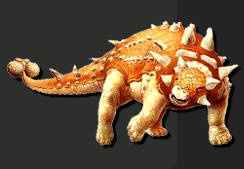 The estimated length of the Ankylosaurus is 9 meters (30 ft).
The estimated length of the Ankylosaurus is 9 meters (30 ft).
Buitreraptor
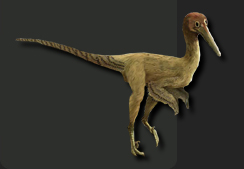 Buitreraptor lived about 90 million years ago.
Buitreraptor lived about 90 million years ago.
Carcharodontosaurus
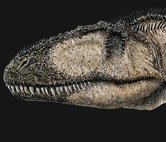 Cercharodontosaurus lived 90 to 100 million years ago.
Cercharodontosaurus lived 90 to 100 million years ago.
Carnotaurus
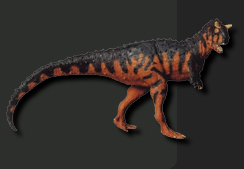 The closest relatives of Carnotaurus are the Aucasaurus, Majungasaurus, and Rajasaurus.
The closest relatives of Carnotaurus are the Aucasaurus, Majungasaurus, and Rajasaurus.
Centrosaurus
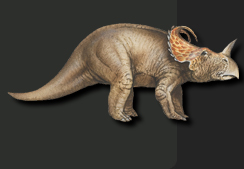 The Centrosaurus belongs to the sub-family Centrosaurinae which was named after the dinosaur.
The Centrosaurus belongs to the sub-family Centrosaurinae which was named after the dinosaur.
Chirostenotes
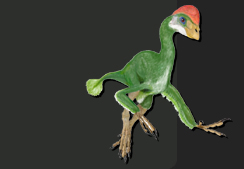
The Chirostenotesis thought to be an omnivore meaning that it eats meat as well as plants.
Corythosaurus
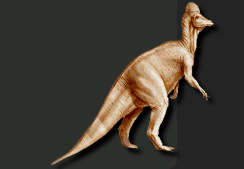 Corythosaurus had a beak and not a mouth. there was no teeth in the front, but rows of them in the back of the jaw.
Corythosaurus had a beak and not a mouth. there was no teeth in the front, but rows of them in the back of the jaw.
Deinonychus
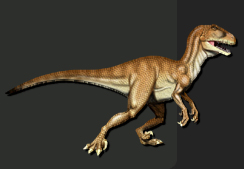 The Deinonychus was about 11 feet in length with a skull about the size of 16.5inches.
The Deinonychus was about 11 feet in length with a skull about the size of 16.5inches.
Dreadnoughtus
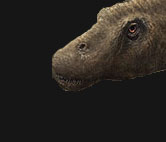 The Dreadnoughtus was discovered by Kenneth Lacovara in Argentina.
The Dreadnoughtus was discovered by Kenneth Lacovara in Argentina.
Dromaeosaurus
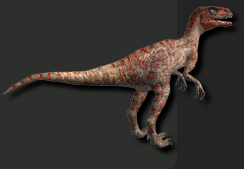 Dromaeosaurus is from the Dromaeosaurinae group. This dinosaurs such as the Utahraptor, Achillobator, and Adasaurus were in the same group.
Dromaeosaurus is from the Dromaeosaurinae group. This dinosaurs such as the Utahraptor, Achillobator, and Adasaurus were in the same group.
Falcarius
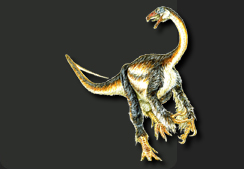 The Falacarius got its name from the word sickle. Falcarius in Latin means sickle cutter, which scientists have used to describe its awkward clawed hands.
The Falacarius got its name from the word sickle. Falcarius in Latin means sickle cutter, which scientists have used to describe its awkward clawed hands.
Gallimimus
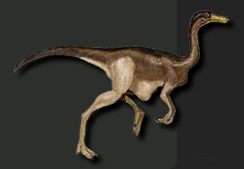 Gallimimus are thought to be very fast because they were very Ostrich-like, but there is not much evidence that this is true.
Gallimimus are thought to be very fast because they were very Ostrich-like, but there is not much evidence that this is true.
Giganotosaurus
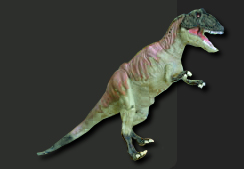 Giganotosaurus was discovered in 1993 by Ruben Carolini.
Giganotosaurus was discovered in 1993 by Ruben Carolini.
Hesperonychus
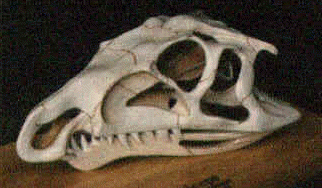 The Hesperonychus is known from a partial skeleton found by Elizabeth Nicholls.
The Hesperonychus is known from a partial skeleton found by Elizabeth Nicholls.
Monoclonius
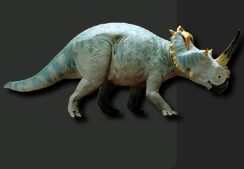 The Monoclonius is of the Ceratopsia group.
The Monoclonius is of the Ceratopsia group.
Iguanodon
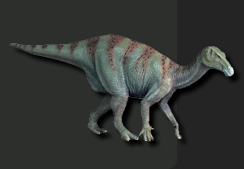 Many Iguanodon fossils were found in many far apart locations such as Europe, Asia, Canada, USA, and Africa.
Many Iguanodon fossils were found in many far apart locations such as Europe, Asia, Canada, USA, and Africa.
Nanotyrannus
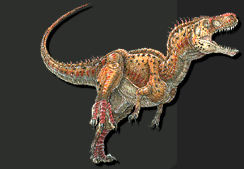 Most paleontologists now are convinced that Nanotyrannus was actually a juvenile Tyrannosaurus and not a separate genus of dinosaur.
Most paleontologists now are convinced that Nanotyrannus was actually a juvenile Tyrannosaurus and not a separate genus of dinosaur.
Nigersaurus
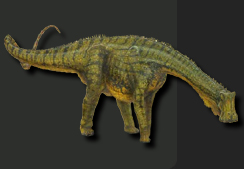 There have been mentions that the Nigersaurus may have been responsible for dinosaur extinction by exhausting to plant life and causing starvation.
There have been mentions that the Nigersaurus may have been responsible for dinosaur extinction by exhausting to plant life and causing starvation.
Olorotitan
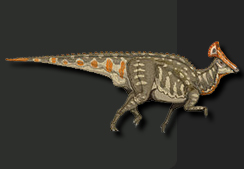 Olorotitan fossils have been found with nearby fossils of turtles, crocodilians, theropod dinosaurs, and nodosaurid dinosaurs.
Olorotitan fossils have been found with nearby fossils of turtles, crocodilians, theropod dinosaurs, and nodosaurid dinosaurs.
Pachycephalosaurus
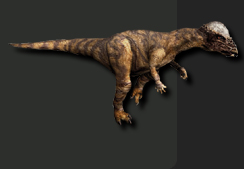 The Pachycephalosaurus Large helmet on its head was originally thought to be for competition with bumping heads. This thought has been frowned upon because they would've easily been injured this way.
The Pachycephalosaurus Large helmet on its head was originally thought to be for competition with bumping heads. This thought has been frowned upon because they would've easily been injured this way.
Parasaurolophus
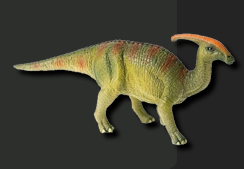 The long tube-like crest on the Parasaurolophus is not known what its purpose is for sure. Some say that it was for thermoregulatory functions to control its temperature.
The long tube-like crest on the Parasaurolophus is not known what its purpose is for sure. Some say that it was for thermoregulatory functions to control its temperature.
Polacanthus
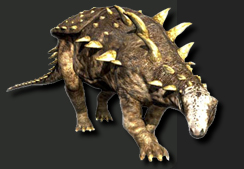 Polacanthus was first discovered in 1865 by William Fox. The same year it was named by a man by the name of Richard Owen.
Polacanthus was first discovered in 1865 by William Fox. The same year it was named by a man by the name of Richard Owen.
Rapator
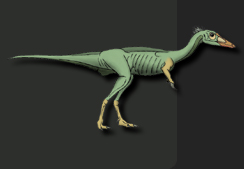 The Rapator was found in the Griman Creek Formation at New South Wales, Australia. The first time it was described was in 1932.
The Rapator was found in the Griman Creek Formation at New South Wales, Australia. The first time it was described was in 1932.
Suchomimus
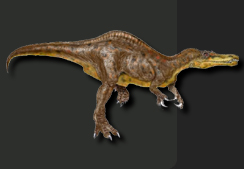 Suchomimus had a very high sail along its back that was probably used to let out body head and have advanced controlling of its temperature.
Suchomimus had a very high sail along its back that was probably used to let out body head and have advanced controlling of its temperature.
Stygimoloch
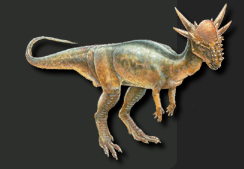 The Stygimoloch name means in Greek "horned devil from the river of death" and it walked upright on its two feet.
The Stygimoloch name means in Greek "horned devil from the river of death" and it walked upright on its two feet.
Tarchia
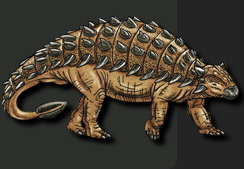 The Tarchia is the currently the geologically youngest known of all the Asian ankylosaurid dinosaurs.
The Tarchia is the currently the geologically youngest known of all the Asian ankylosaurid dinosaurs.
Torosaurus
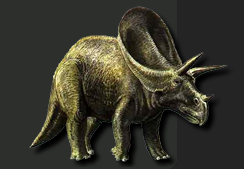 Torosaurus are from the dinosaur group "ceratopians" which means bird-hipped. This group of dinosaurs had a lot in common with bird such as a beak instead of a mouth.
Torosaurus are from the dinosaur group "ceratopians" which means bird-hipped. This group of dinosaurs had a lot in common with bird such as a beak instead of a mouth.
Triceratops
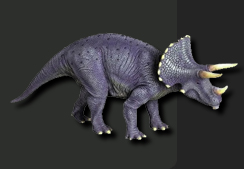 The name Triceratops actually means "Three horned face." It was named by Othniel Charles Marsh on the third try. He first named it Bison alticornis, then Ceratops, to finally later called it Triceratops.
The name Triceratops actually means "Three horned face." It was named by Othniel Charles Marsh on the third try. He first named it Bison alticornis, then Ceratops, to finally later called it Triceratops.
Troodon
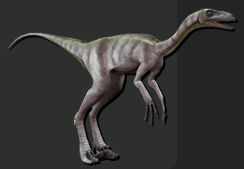 The name Troodon is Greek for Wounding tooth. This refers to the dinosaurs teeth which had apically oriented serrations. This was very rare with other theropods
The name Troodon is Greek for Wounding tooth. This refers to the dinosaurs teeth which had apically oriented serrations. This was very rare with other theropods
Tsaagan Mangas
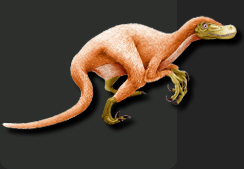 The Research of the Tsaagan Mangas is based on only a single skull fossil because there has never been any findings since.
The Research of the Tsaagan Mangas is based on only a single skull fossil because there has never been any findings since.
Tsintaosaurus
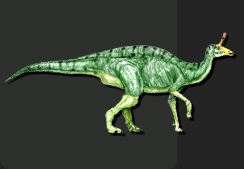 scientists argue of the purpose of the Tsintaosaurus' horn-like crest.
scientists argue of the purpose of the Tsintaosaurus' horn-like crest.
Tyrannosauripus
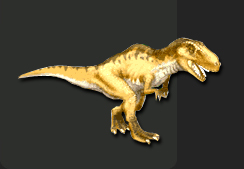 Fossils were found with a Protoceratops & Raptor that seem to have been fighting when they were quickly killed. The claw of the raptor was in the others' stomach.
Fossils were found with a Protoceratops & Raptor that seem to have been fighting when they were quickly killed. The claw of the raptor was in the others' stomach.
Tyrannosaurus
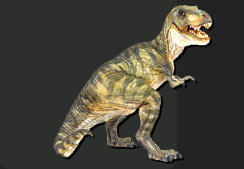 The Tyrannosaurus was thought to be the biggest Carnivore ever to exist, but its not. The Giganotosaurus is actually the biggest.
The Tyrannosaurus was thought to be the biggest Carnivore ever to exist, but its not. The Giganotosaurus is actually the biggest.
Utahraptor
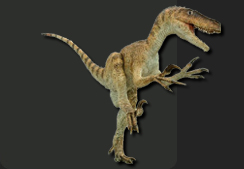 To help it balance on one foot while kicking, the Utahraptors' tail stiffened.
To help it balance on one foot while kicking, the Utahraptors' tail stiffened.
Velociraptor
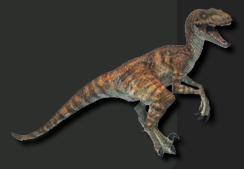 Fossils were found with a Protoceratops & Raptor that seem to have been fighting when they were quickly killed. The claw of the raptor was in the others' stomach.
Fossils were found with a Protoceratops & Raptor that seem to have been fighting when they were quickly killed. The claw of the raptor was in the others' stomach.
Cretaceous Period Dinosaurs
Cretaceous Period
The Cretaceous Period was the last period of the three which made up the Mesozoic Era. It was during this time, which ended close to 65 million years ago, where the Dinosaurs last ruled the Earth. It was during this time period that the planet began to change, both in terms of the way that it looked and the environment, to the world that we know today.
We know more about the Cretaceous Period than any of the other two periods that made up the Mesozoic Era (i.e. the Jurassic and Triassic periods). This is in part down to the fact that fossils from the Cretaceous Period are far higher up in the rock than those from the Jurassic and Triassic period. In fact; it is very difficult to dig down far enough into the earth’s crust to get a true idea of what went on in these periods in terms of life. We do know that dinosaurs existed back then, but we have very little idea about how many different types there were, the areas in which they were located, and how much these dinosaurs and other animals changed over the Mesozoic Era.
The Evolution of Species Over the Mesozoic Era
As mentioned previously; the Mesozoic Era is split up into three different time periods:
- Triassic Period: This began 245 million years ago. It was at this stage that the first dinosaurs began to appear on the planet. It was also at this time that mammals began to appear. Reptiles had appeared previously on Earth with the first appearing during the Carboniferous period, which began 360 million years ago. This was part of the era known as ‘Palaeozoic Era’.
- Jurassic Period: This occurred 280 million years ago. It was when birds first began to appear on the planet.
- Cretaceous Period: This is the era we are covering on this page. It happened 144 million years ago and ended 65 million years ago. It was at the end of the Cretaceous Period where modern animals began to appear on the planet. We will cover this in more depth soon.
Contrary to popular belief, there was no great transition which took place between the Jurassic Period and the Cretaceous Period. Things were actually fairly smooth – unlike the period between the Triassic and Jurassic Period where dinosaurs began to take a slightly more dominate role in the world and the climate changed drastically from dry weather to something pretty close to rainforest weather.
Perhaps the defining characteristic of the Cretaceous Period, evolutionary wise at least, was the fact that it was during the Cretaceous Period that the first flowing plants started to appear on land. These plants were known as the Anthophyta. They are direct descendants of the plants that we have in this day and age. The spread of these flowering plants was hastened by a new addition to the animal world. This was the humble bee…an animal which still exists today performing the very same job that it performed back in the Cretaceous Period. The spread of these plants led to a huge diversification of plant species from the Jurassic Period. The area roughly looked the same, ferns tended to be pretty much everywhere, but the world started to become a lot more diverse on the botanical front.
The Cretaceous Period was a top period for growth in the seas too. Sharks and Rays started to appear. A couple of species that were left over from the Permian Extinction event, namely starfish, started to become a lot more dominant too. These animals continued to evolve, but not by much, into the animals that populate our planet nowadays.
Perhaps the biggest change during the Cretaceous Period was the evolution of mammals. It was here that Marsupials began to evolve. The mammals that existed at this point were tiny. Most were no larger than a mouse. They were unable to thrive due to the dominance of the dinosaurs at this point. It was only after the dinosaurs began to die out that the mammals were able to take a bit more of a hold on their evolution. These Marsupials were completely different to the mammals that populate the planet today (humans included), but they almost certainly set the wheels in motion for further evolution on the mammal front.
Apart from this the world remained pretty much unchanged evolutionary wise. Dinosaurs still dominated the planet. A minor change here was the appearance of more and more carnivores. The previous periods seemed to have been dominated by herbivores and omnivores. The reason for this evolutionary change is unclear at the moment. Dinosaurs tended to be bigger than their counterparts from previous periods. It was during this time period, although near the end of the Cretaceous Period, where the Tyrannosaurus Rex, the Velociraptor, and the Triceratops began to make appearances.
The Epochs of the Cretaceous Period
The Cretaceous Period was formed of two epochs; Late and Early. It was during the early epoch where the planet was going through a bit of a transition from the Jurassic Era. It was here that many of the species that populated the planet where very much similar to those that populated it during the Jurassic Era. There were a few changes here and there but these were small and subtle changes. It was not until the late epoch where huge changes started to happen. It was here mammals entered the fray (as discussed previously), and the species that existed were substantially different from those that existed during the Cretaceous Period.
The epochs are distinguished roughly by the species that existed at that point. This includes both plant and animal species. These epochs are broken down into ages. Species fit into these ages based upon where they are located as fossils within the rocks. By using what is known as the geological timescale it is easy to determine what species lived and when. We only need to look at what rocks the fossils are located in and how deep they are in these rocks.
The Cretaceous Period pans out as follows:
Early
- Berriasian: 145 Million Years Ago
- Valanginian: 139.4 Million Years Ago
- Hauterivian: 133.9 Million Years Ago
- Barremian: 130.8 Million Years Ago
- Aptian: 126.3 Million Years Ago
- Albian: 113 Million years Ago
Late Cretaceous
- Cenomanian: 100.5 Million Years Ago
- Turonian: 93.9 Million Years Ago
- Coniacian: 89.8 Million Years Ago
- Santonian: 86.3 Million Years Ago
- Campanian: 83.6 Million Years Ago
- Maastrichtian: 72.1 Million Years Ago to the end of the Cretaceous Period.
Each of these ages is defined by the introduction or the extinction of a very specific animal. This animal, normally an ammonite e.g. the start of the Hauterivian age is defined by the first appearance of Acanthodiscus. As mentioned previously; each of the ages of the Cretaceous period had a variety of different species and plants. The climate tended to be slightly different too.
The Environment during the Cretaceous Period
The Cretaceous Period was incredibly warm. The average temperature during the Cretaceous Period was 18 degrees Celsius. This puts it at 4 degrees Celsius higher than the average temperatures that we experience in this modern age.
The warm climate meant that sea levels rose. This meant that a number of lakes and seas inland began to appear. Many of these locations, the Gobi Desert in Mongolia for instance, are nothing more than dry land in the modern age. Back in the Cretaceous Period they were absolutely booming with life however. Many of these locations were surrounded by tall and lush forests as far as the eye could see. The lowering temperatures over the next few million years meant that much of these areas began to die out quite quickly.
During the Berriasian epoch (a short period of time during the Cretaceous Period), the planet began to cool. Snow began to appear in the north of the planet. The tropical locations seemed to get far wetter too. Large amounts of volcanic activity near the end of this epoch raised temperatures considerably though and this did not cease throughout the rest of the Cretaceous period.
Oxygen levels over this time period were roughly 150% of what we experience today. Carbon Dioxide content over the same period was roughly six times higher than what we experience today. This means that the world was an incredibly different place to live in back then.
What The World Looked Like During the Cretaceous Period
At the start of the Mesozoic Period (i.e. during the early stages of the Triassic Period), the world looked incredibly different to what it looked like today. In fact; all land was joined up as a supercontinent known as ‘Pangaea’. This large continent began to break-up during the early stages of the Triassic Period. It completed this period of change, or most of it at least, during the Cretaceous Period.
Throughout the Jurassic Period the land masses on Earth had begun to break-down considerably. It was during the Cretaceous Period where the world went through the biggest change. It was at this time that Africa began to split from South America, Antarctica, and Australia. Nearer the end of the Cretaceous Period the continents looked much the same way that they do nowadays (although Antarctica and Australia were still joined at this point). The only real difference between the way in which the continents appeared and what we known in the modern age was the positioning. These continents were still moving into position (they are still moving and slowly breaking apart right now). The planet was still of course being formed at this point with a number of volcanic eruptions and other geographical events resulting in new land masses being formed.
The End Of The Cretaceous Period
The end of the Cretaceous Period was around 65 million years ago. The end of this Mesozoic era, just like the other eras before it, was signalled by a mass extinction event. Contrary to popular belief this mass extinction event was not instant. There was no large ball of fire which wiped all species off the face of the planet within seconds. The fall of the dinosaurs was incredibly slow.
By the time the meteor hit many species had already become extinct due to a variety of different factors. Dinosaurs were still going strong and holding dominance over the world. Things had changed though. More species of animal dominated the planet than ever before which leads to competition for the sparse amount of resources that the planet had. This meant that only the animals which were able to fend for themselves where able to thrive out there (i.e. evolution at play). The meant that many species had died out before the meteor even hit.
There is no denying that the meteor changed everything though. As I said; it was not instant. This period of change happened over roughly 200,000 years. The meteor created a huge cloud of dust which managed to block out virtually all of the sun’s rays. This meant that the plants on the planet were not getting the sunlight that they needed to thrive. This of course meant that many species began to die out. As the plants died the herbivores had less and less to eat. This caused them to die out slowly too. With the herbivores dying out the carnivores had little to eat. This caused them to die out slowly too. This of course is a very simplified version of what actually happened. This was a very slow process after all.
There were a few animals which managed to get through the mass extinction event of the cretaceous period. All dinosaurs and marine reptiles were wiped out. Birds and small insects were able to survive though. Many of the birds that we know today evolved from feathered dinosaurs from the cretaceous period. No dinosaurs were able to escape the mass extinction (although some reptiles were such as crocodiles).
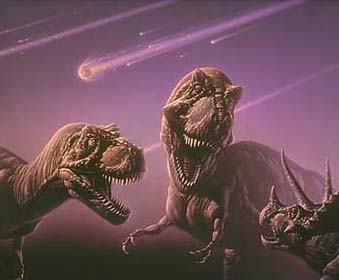
Image copyright Joe Tucciarone
Index
Extinct Profiles
 Triassic Dinosaurs
Triassic Dinosaurs Jurassic Dinosaurs
Jurassic Dinosaurs Cretaceous Dinosaurs
Cretaceous Dinosaurs Pterosaurs
Pterosaurs Marine Reptiles
Marine Reptiles Dinosaur Extinction
Dinosaur Extinction